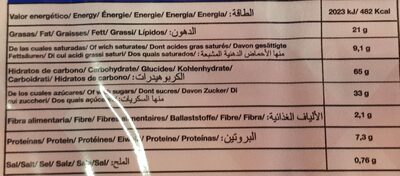Tartaletas para rellenar - ArruaBarrena
Aquesta pàgina del producte no està completa. Podeu ajudar a completar-la editant-la i afegint-hi més dades a partir de les fotos ja disponibles, o fent-ne més amb l'aplicació de androide o iPhone / iPad. Gràcies!
×
Codi de barres: 8413760003013 (EAN / EAN-13)
Marques: ArruaBarrena
Categories: es:Hojaldrada-rellena-de-crema
Països on es va vendre: Espanya
Matching with your preferences
Entorn
Empaquetament
Transport
Espècies amenaçades
Report a problem
Fonts de dades
Producte afegit per kiliweb
Última modificació de la pàgina del producte per nicolasma962.
La pàgina del producte, també editada per elcoco, openfoodfacts-contributors, roboto-app, yuka.R29jeU9vMHVvL0E3dnZNajF4YlQrSXhaenBYM2VqcXFPZWtKSWc9PQ.
Si les dades són incorrectes o incompletes, pot completar o corregir editant aquesta pàgina.










